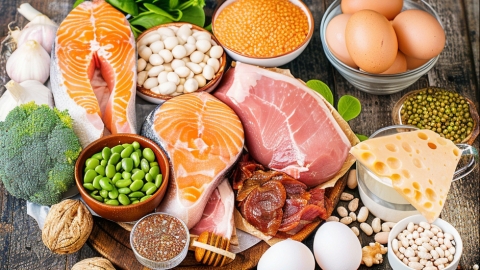What foods are best to eat for high blood sugar?
There is no such thing as "which food is best for high blood sugar." However, individuals with high blood glucose typically benefit from consuming foods such as oatmeal, bitter melon, black fungus, onion, and pumpkin.

1. Oatmeal: Oatmeal is a whole grain rich in dietary fiber, which can delay gastric emptying and prevent a sudden rise in blood sugar after meals. It can be cooked as porridge or made into mixed grain rice, replacing part of refined staple food, with a recommended daily intake of 30-50 grams. Its viscous texture, when combined with milk or vegetables, increases satiety and helps stabilize blood sugar levels, making it suitable for long-term consumption as breakfast.
2. Bitter Melon: Bitter melon contains natural bitter compounds and has traditionally been used in dietary therapy to assist in lowering blood sugar. It can be stir-fried, made into a cold dish, or added to soups. With a crisp and slightly bitter taste, it stimulates appetite and is low in calories. A daily intake of 100-200 grams is recommended, with minimal oil and salt used during cooking to preserve the natural flavor. Its high water content and low glycemic characteristics make it suitable for individuals with diabetes to pair with staple foods in daily meals, helping to control fluctuations in blood sugar.
3. Black Fungus: Rich in gelatinous substances and dietary fiber, black fungus can adsorb sugars in the intestines and delay their absorption. After soaking, it can be made into cold dishes, stir-fried, or added to soups. With a crisp and elastic texture, a daily intake of 10-15 grams of dried product is sufficient. When paired with lean meat or leafy vegetables, it enhances the flavor of dishes while increasing dietary fiber intake, which helps regulate post-meal blood sugar levels.
4. Onion: Onions contain sulfides that can enhance insulin sensitivity and aid in improving glucose metabolism. They can be sliced and stir-fried with meat, roasted, or used as a salad garnish. Their pungent flavor promotes secretion of digestive fluids and improves appetite. A daily intake of 50-100 grams is recommended, with high-temperature frying avoided to preserve active ingredients. Onions are suitable to be consumed with staple foods at lunch or dinner to help delay the rate of blood sugar elevation.
5. Pumpkin: Pumpkin is rich in dietary fiber. Although it contains some sugars, its glycemic rise is relatively slow. It increases satiety and delays the rise in blood sugar. It can be steamed, cooked into porridge, or made into pumpkin soup, with a recommended daily intake of 100-150 grams. Its naturally sweet flavor can replace part of the staple food and is suitable for diabetic patients to consume with leafy vegetables at lunch or dinner to assist in controlling postprandial blood sugar.
Individuals with high blood sugar can moderately consume a variety of foods from the above categories to maintain nutritional balance and control blood glucose levels. In daily diets, it is recommended to maintain a balanced meal structure and diversify food intake to help sustain good health.








